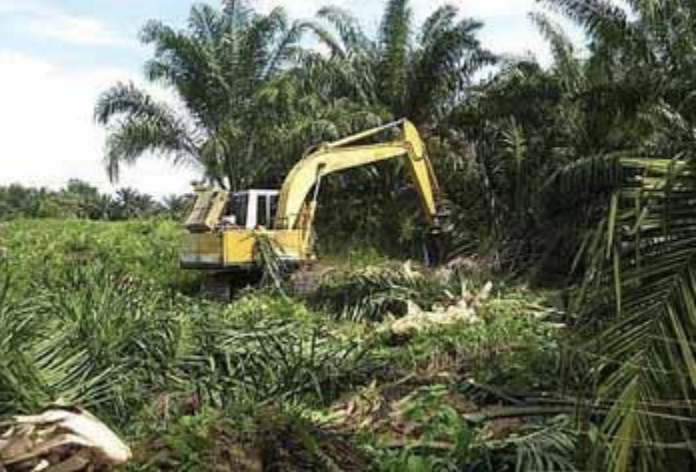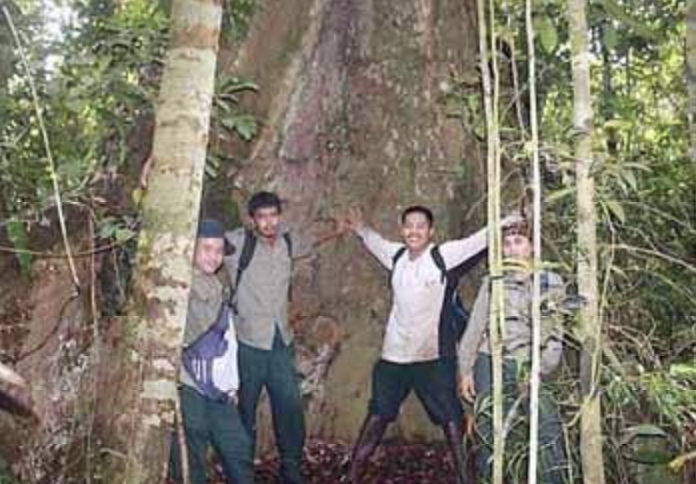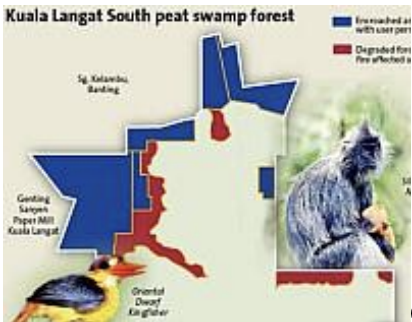Author: Stuart Michael and Christina Low | January 11, 2011 | Community
Due to concerns about the potential conversion of the Kuala Langat South Peat Swamp Forest (KLSPSF) into an oil palm plantation, various non-governmental organizations and government bodies have collaborated to document the rare species of animals, birds, trees, and plants inhabiting the area. Their primary goal is to prevent the state from permitting the transformation of this 6,908-hectare swamp forest into an oil palm estate, safeguarding one of Selangor’s last remaining peat swamps.
Recently, the Selangor government approved a proposal from the Selangor State Agricultural Corporation to convert the entire KLSPSF into an oil palm plantation. Since March 2008, the Selangor Forestry Department has prohibited logging in the state and has refrained from issuing any logging licenses. However, due to the proposed plantation, the department has been compelled to issue logging licenses, resulting in growing concerns among environmentalists.

All will be gone soon: An excavator at
work at the Kuala Langat South Peat Swamp forest.
The conservation of this forest is of paramount importance for the preservation of rare, threatened, and endangered species found in the area, some of which exist nowhere else. Furthermore, this area represents the last untouched jungle reserve within a peat swamp forest south of the Klang River.
During a recent visit to the swamp forest, members from various organizations, including the Global Environment Centre, Wildlife Department, Malaysian Nature Society, Forest Reserve Institute of Malaysia, State Forestry Department, and Universiti Putra Malaysia, conducted a comprehensive documentation of the bird, animal, and tree species in this ecosystem. They stressed that the peatland plays a crucial role in carbon storage and the regulation of greenhouse gas emissions, contributing to global climate stability. Any exploitation or degradation of this area could lead to the release of carbon, impacting the environment negatively.

Rare trees: Huge trees like these are a
common sight in the forest.
Studies conducted by these NGOs have revealed that the swamp forest boasts an average depth of 3.3 meters, categorized as deep peat. Deeper peat makes it less suitable for agriculture, as its development requires substantial capital and technical expertise. The conventional method of preparing peatland for agriculture involves burning the trees, which is environmentally destructive.
KLSPSF was designated as a forest reserve on May 13, 1927, under the provisions of the Federated Malay States Forest Enactment 1918. It was initially encompassed 12,141 hectares but has been subject to degazettement multiple times, with much of the land converted for agricultural purposes. This forest reserve is surrounded by towns such as Banting, Sepang, Sungai Pelek, and Tanjong Sepat.
Swamp forests play a critical role as natural reservoirs, absorbing and retaining water and releasing it gradually during drier periods. These swamp forests are essential for preventing flooding in towns like Banting and other areas in Kuala Langat during the monsoon season.

The KLSPSF forest is home to several endangered tree and animal species
Within KLSPSF, dominant tree species include stemonurus secundiflorus Icacinaceae and koompassia malaccensis (Kempas), both representative of tropical rainforests. The forest is home to several endangered tree species like meranti bunga. Additionally, endangered wildlife species such as tapirs, wild boars, silver leaf monkeys, lesser short-nosed fruit bats, and a lizard known as cyrtodactylus baluensis inhabit the forest. The swamp also serves as a habitat for bird species like the collared scops-owl, banded woodpecker, oriental dwarf kingfisher, maroon woodpecker, chestnut-winged cuckoo, green Iora, and lesser racket-tailed drongo.
